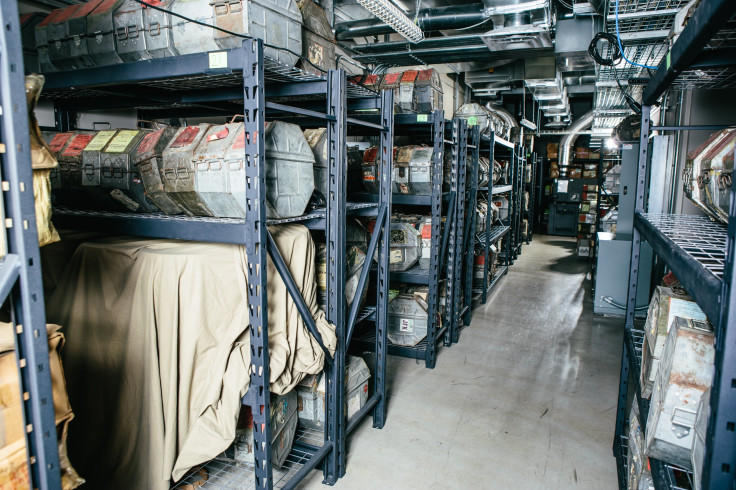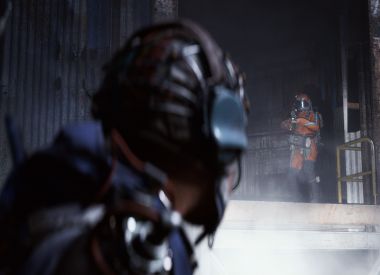The Smut Peddler cackles, burps and lets loose a mouth fart as he sexually menaces a Barbie doll. We watch through a jagged, cardboard “keyhole” until he catches us in the act. Thankfully, the Smut Peddler, with his boils and beard of glued pubes, isn’t mad at our voyeurism. Instead, he promises us “strange love desires that make a mockery out of marriage.” The dizzying montage that follows has it all — stripteases, tooth-pulling, foot fetishes, drinking straight from the bottle, and a man in a tuxedo dribbling oysters down his lascivious chin. Though the film has been lost (a print may have popped up in Finland), the trailer alone embodies so much of the exploitation cinema ethos, especially its simultaneous desire to titillate and disgust us, counting on both arousal and shock to draw in audiences.
“I always imagined that’s what people thought of exploitation fans: really gross people sitting in their apartments alone, obsessing over these movies,” Joe Ziemba told Player.One. He’s the art director and programmer for Alamo Drafthouse theaters and founder of trash-horror site Bleeding Skull, plus a volunteer with the American Genre Film Archive.
Ziemba’s characterization of public views on exploitation film lovers isn’t just a matter of individual reputations. Instead, it could prove the difference between two futures: one rich with celluloid knowledge and choice, the other a Library of Alexander disaster in slow-motion, as beautiful, bloody, pervy, wonderful films are lost to decay.
We spoke with Ziemba and the American Genre Film Archive’s chief archivist, Sebastian del Castillo, about the future of the archive and the growing community of schlockmeisters, gorehounds and yes, smut peddlers, who treasure some of cinema’s most neglected and misunderstood masterpieces.
When we last visited the American Genre Film Archive in Austin, Texas, del Castillo was prepping a 35mm print of Cannibal Ferox and awaiting the arrival of a 4K film scanner that will allow the Archive to create DCP (Digital Cinema Package) copies of select films in the archive. Now they’ve scanned their first film, 1971’s “ outrageous and compelling ‘tabloid horror’ vortex,” The Zodiac Killer.
Our 4K scan of THE ZODIAC KILLER w/@swvonline is underway!! pic.twitter.com/7TSAF0qCHK
— AGFA (@filmarchive) June 17, 2016
Today, we discovered that THE ZODIAC KILLER was shot on 16mm and blown up to 35mm for release. pic.twitter.com/DeqXfDax1l
— AGFA (@filmarchive) June 17, 2016
THE ZODIAC KILLER has been scanned in 4K. Next step: find the Zodiac Killer. pic.twitter.com/eEdZFdT3pu
— AGFA (@filmarchive) June 20, 2016
With 3,200 films in its collection, the AGFA is the largest archive of its kind, preserving the independent exploitation movies of the 60s, 70s and 80s. Movies in the collection have “a spirit of rebellion that goes against the grain and keeps them out of the mainstream,” del Castillo said.
“Genre covers all of it,” Ziemba said.
“Brucesploitation, which is Bruce Lee exploitation,” del Castillo began, rattling off a few of the more outlandish categories they’ve encountered in the archive. “There's Squatchploitation which is all Bigfoot stuff. Nudie cuties. All kinds of subgenres of blaxploitation…We have hundreds of Tai Seng Hong Kong titles. Fantasy and Kung Fu. Crime. Romance. Horror. Teen comedy. A lot of Canon and AIP stuff. There's fantasy. Science fiction.”
“We have an animated dirty Tarzan movie called Shame of the Jungle,” Ziemba said.
Still, they’re just scratching the surface of what’s out there and in desperate need of preservation and advocacy.
“It's going to continue to be a problem. Acetate film only lasts for so long,” del Castillo said. “Some archives have more money and can have better climate control, which will definitely add life to these prints. But I think for the most part exploitation films don't have that luxury.”
The situation is worse than you can imagine. In one of their more recent acquisitions, hundreds of film canisters were literally rescued from getting dumped in the ocean. If these films are to get the attention they deserve, it will take much more than a 4K film scanner and storage space.
“When people hear we got a digital scanner it probably seems like 'oh, we're going to do the whole archive,' but you couldn't do that if you had five lifetimes. It'd be impossible,” Ziemba said.
Movies live and breathe on screen, so enabling 35mm screenings continue to be the core mission of the American Genre Film Archive. “Even though we're making DCPs and going into digital restoration and digital archiving, something that's really important to us is 35mm exhibition. We still want to show the films where and when we can,” del Castillo said.
With the mounting influence of indie theater chains like Alamo Drafthouse (with which the AGFA is affiliated), the exploitation gospel is spreading.
“I think a really great that's happened over the past five years is that people who really truly love these movies for the right reasons have been embracing them, almost as a lifestyle,” Ziemba said.
While eyes on the screen is a huge part of ensuring a future for these films, Ziemba and del Castillo are also hopeful that more viewers means more respectability. “It's just one more step in the fight against so bad it's good,” Ziemba said, lamenting a framing that reduces films in the archive to schlocky curios.
“‘Oh, look at this asshole who didn’t know how to light a movie. Look at the boom!’” Ziemba mimicked. It’s a mentality that can keep exploitation films from getting the same treatment as the arthouse or classic Hollywood, resulting in a destructive marginalization. “Who cares? It's more about you watching something that no other human being in the history of the world ever created. No one created a movie like any of these movies and it might be the only time you can see it.”
“I think this idea of an unironic appreciation of what these movies are and what they stand for and what they can mean to you and how they can make you happy in your life, I think that's being embraced a lot more,” Ziemba said. “People aren't afraid to say I had a really good time watching Andy Milligan's Bloodthirsty Butchers, it makes me feel good.”
“I don't look at these movies and think like 'what's make them special is that they’re bad' or that they're laughable or something. Maybe the production values are not the highest. These people who were working on these films were not necessarily professionals,” del Castillo said. “But that's how you get a lot of the good stuff. It's what makes a film unique, not having total professionals working on it and having idiosyncrasies in acting styles. I know Joe and I talk about this all the time. But you can't get Andy Milligan films anywhere else. And his reputation is like "oh, he's the worst filmmaker, his movies are laughable.' But it's not like that at all. They're incredible."
“You have to exchange this idea of being a professional for the idea of how much heart in this movie,” Ziemba said. “It's best to assume that no one in the world looks at it as so bad it's good. It doesn't exist. Like, Mystery Science Theater doesn't exist. None of that stuff exists, the only thing that exists are the good things. Which is understanding that when these movies were made people put their lives on the line to make them.”
After the successful film scanner Kickstarter and seven years of steady growth, the archivists are beginning to find opportunities to not just catalog, but advocate and potentially shape the future perception of these often neglected movies. This includes collaborations with exploitation stalwarts like film distributor Something Weird.
“I think for a long time we were just keeping our head above water. Just staying on top of the bookings and stuff like that for Alamos and all the other theaters. Just the day-to-day operation kept me full-time busy. And all the other side projects had to wait. Like 'one day I'll get to that,’” del Castillo said. “But that day is finally here.”
“It blows my mind we have it all,” Ziemba said. “We have Meat Cleaver Massacre… Boarding House, I still can’t believe it. I’ve seen that print of it like three times projected now and I still can’t get enough of watching it.”
“The great things about the archive is constant discovery. Every time I go through the list I find new things that excite me,” Ziemba said. “GoBots: Battle of the Rock Lords, I don't know what that is, I've never seen it. I might hate it, but I still want to watch it. And I think a lot of the titles that we have make me feel that. And I think that's a thread that runs through everything we have. Anything in AGFA I'd sit down and watch.”


















